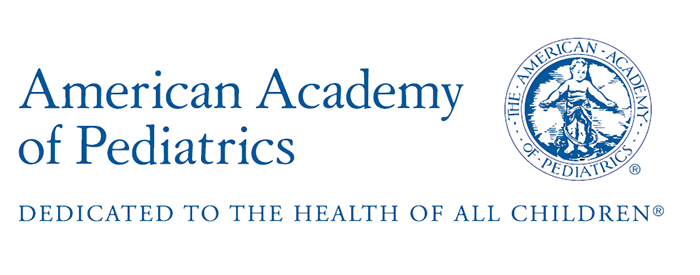

Protecting Your Baby from SIDS or Suffocation During Sleep
Many sleep-related deaths once called “SIDS” or sudden infant death syndrome are now recognized as preventable tragedies caused by suffocation in unsafe sleep environments. The good news is that safe sleep works. When families and caregivers follow safe sleep recommendations for every nap and every night, they can greatly reduce the risk of sleep-related infant deaths.

Safe Sleep:
At HSHS St. John’s Children’s Hospital, your baby’s safety is our highest priority. During your baby’s stay, we consistently follow the American Academy of Pediatrics' safe sleep recommendations when medically possible. We encourage you to continue these practices at home for all infants less than one year of age.
Together, we can help every baby sleep safely.
The ABCs of Safe Sleep
- Your baby should always sleep alone in their own sleep space.
- Do not share a bed with your baby.
- Keep cribs free of pillows, blankets, stuffed toys and bumpers. It’s safest when nothing is in the crib except your baby.
- Room-sharing is recommended, but not bed-sharing. Keep your baby’s crib or bassinet in the same room where you sleep for at least the first 6 to 12 months.
- Always place your baby on their back to sleep, for naps and at night.
- Sleeping on the back reduces the risk of airway obstruction and suffocation.
- Babies with reflux are still safest sleeping on their backs because they’re more likely to swallow any spit-up than choke on it.
- Once babies can roll over on their own, it’s okay to let them find their own sleep position, but always start them on their back.
- Place your baby in a crib, bassinet or approved portable play yard for every sleep.
- Use a safety-approved crib, bassinet or portable play yard that meets Consumer Product Safety Commission (CPSC) standards.
- The crib should have a firm, flat mattress and a fitted sheet.
- Never let your baby sleep on a couch, adult bed or armchair — these are extremely high-risk environments for suffocation.
- For more information on CPSC safety standards, visit Consumer Product Safety Commission (CPSC) at www.cpsc.gov or call 1-800-638-2772.
Additional Safe Sleep Tips for Parents:
- Breastfeeding is linked to a lower risk of SIDS and offers a range of health benefits for both you and your baby.
- If you feed your baby in bed, always put them back in their crib before you fall asleep. If you are feeling drowsy, set an alarm.
- Offering a pacifier at nap time and bedtime can help reduce the risk of SIDS. If you're breastfeeding, wait until breastfeeding is well-established before introducing a pacifier (usually after 2-4 weeks).
- Provide supervised tummy time while your baby is awake to help strengthen neck and shoulder muscles, which are important for motor development.
- Avoid overheating your baby. Dress them in light sleep clothing. Never place a hat on your baby while sleeping. Keep the room at a comfortable temperature.
- Dress your baby in a sleeper or wearable sleep sack instead of using loose blankets.
- Do not smoke around your baby. Secondhand smoke increases the risk of SIDS. Ideally, avoid smoking during pregnancy and after birth to ensure a healthier environment for your baby.
- Do not drink alcohol or use drugs before or while caring for your baby. Both can impair your ability to respond to your baby’s needs, increasing the risk of suffocation or accidents.
- Educate every caregiver of your baby. One in five sudden unexplained infant death cases occur when the baby is being cared for by someone else. Ensure that family members, babysitters and other caregivers are educated about safe sleep to help protect your baby.
Important Safe Sleep Resources
We are committed to providing you with the information and tools to ensure your baby sleeps safely. Below are some trusted resources to guide you in creating a safe sleep environment for your child.
- AAP Safe Sleep: The American Academy of Pediatrics’ official recommendations on safe sleep practices to reduce the risk of sleep-related infant deaths.
- A Parent's Guide to Safe Sleep - American Academy of Pediatrics (AAP): A comprehensive guide with expert advice on safe sleep practices for babies.
- Consumer Product Safety Commission (CPSC): Access to safety standards, recalls and important product safety information, including guidelines for safe sleep environments.
- Cribs for Kids: Provides resources for safe sleep education, including crib distribution programs and community outreach to prevent infant sleep-related deaths.
- Charlie’s Kids Foundation: Promotes safe sleep practices through education, awareness and community outreach to reduce the risk of sleep-related infant deaths.
- National Institute of Child Health and Human Development (NICHD) Safe to Sleep: A comprehensive resource for parents and caregivers to learn about safe sleep practices, including how to create a safe sleep environment for your baby.
- SIDS Illinois: Offers support, education and advocacy to reduce the risk of sudden infant death syndrome and promote safe sleep practices. They provide resources for families, health care providers and caregivers to ensure a safe sleep environment for infants.
- First Candle: Provides education, advocacy and support for families affected by SIDS, stillbirth and other infant deaths. First Candle works to improve safe sleep practices nationwide.
We’re Here to Help
We understand safe sleep can feel challenging. If you need help getting a crib or have questions about safe sleep, please ask your provider or nurse — we can work together to connect you with support and resources to keep your baby safe.
We also have many classes and resources available, including Baby Basics and Breastfeeding sessions, for expectant parents. Call us at 217-744-2229. If you are in need of additional community-based services, such as housing, food assistance, financial support or other needs, visit HSHS Community Connect to search free or reduced cost programs.
Safe sleep saves lives. Every nap. Every night.